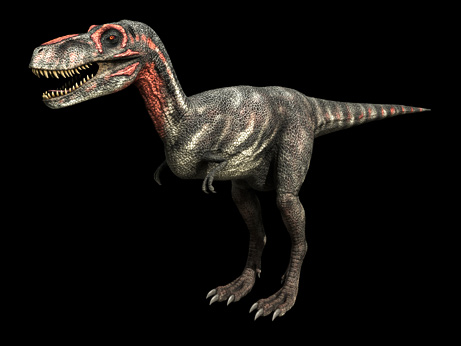
That's because young dinosaurs didn't look like Mini-Me versions of their parents, according to new analyses by paleontologists Mark Goodwin, University of California, Berkeley, and Jack Horner, of Montana State University.
Instead, like birds and some other living animals, the juveniles went through dramatic physical changes during adulthood.
This means many fossils of young dinosaurs, including T. rex relatives, have been misidentified as unique species, the researchers argue.
How T. Rex Became a Terror
The lean and graceful Nanotyrannus is one strong example. Thought to be a smaller relative of T. rex, the supposed species is now considered by many experts to be based on a misidentified fossil of a juvenile T. rex.
The purported Nanotyrannus fossils have the look of a teenage T. rex, Horner said in the new documentary. That's because T. rex's skull changed dramatically as it grew, he said.
The skull morphed from an elongated shape to the more familiar, short snout and jaw, which could take in large quantities of food.
But the smoking gun, Horner said, was the discovery of a dinosaur between the size of an adult T. rex and Nanotyrannus.
Nanotyrannus - actually a young T. rex in Horner's view - had 17 lower-jaw teeth, and an adult T. rex had 12.
The midsize dinosaur had 14 lower-jaw teeth - suggesting that it was also a young T. rex, and that tyrannosaurs gradually traded their smaller, blade-like teeth for fewer bone-crushing grinders in adulthood.
Triceratops Transformation
The paleontologists also amassed a large collection of Triceratops fossils, which had died in various stages of life, from eastern Montana's Hell Creek formation from the late Cretaceous epoch (145.5 to 65.5 million years ago).
The dinosaur skulls, which ranged from dinner plate-size to human-size, came from a range of animals.
When the paleontologists studied the skulls, they found that the youngest animals' tiny, straight horns changed as they got older: Juveniles' horns actually curved backward, whereas adult horns pointed forward.
The animal's distinctive neck frill also changed - the triangular spiked bones surrounding the frill in juveniles became flattened and lengthened into a bony fan-like shield.
"In this ten-year project we were able to collect a very good growth series that no one had ever seen before, and see this transformation that occurs," Goodwin said.
"We could document the extreme changes that occur with growth, [like] the direction that the horns are pointing."
Birds of a Feather
Clues to why dinosaurs underwent such dramatic physical changes may be found in their closest living relatives - birds experts say.
Hornbills, for example, don't sport their distinctive helmet-like head casque (see hornbill picture) until they are about three-quarters grown.
Like deer antlers, the casque helps other animals discern between mature adults and juveniles.
In the same way, dinosaurs' changing appearances might have also promoted visual communication.
For example head knobs or horns, likely paired with color variations, may have created unmistakable visual displays that made sure members of a species recognized one another.
They may also have identified dinosaurs as male or female and marked them as mate-seeking breeders or juveniles in need of protection.
Exaggerated Conclusion?
Hans-Dieter Sues, a paleontologist at the National Museum of Natural History in Washington, D.C, said that scientists discovered in the 1970s that some duck-billed dinosaur species were in fact animals in different stages of maturity - representing a smaller number of species.
Sues, who was not involved in the new research, agrees that some dinosaur species from the late Cretaceous may prove to be juveniles of other species.
"Many dinosaurs - just like many present-day vertebrates - changed a lot in their appearance as they grew up," he said.
But "some of [these] conclusions are controversial," Sues cautioned, adding that the idea that up to a third of all species may be reclassified is an exaggeration.
In fact, Sues suspects that a second wave of dinosaur extinction is unlikely - unless, that is, fossil hunters hit the jackpot.
"Testing such hypotheses is difficult," he said, because "it requires more fossil material than is currently available."
See video of dinosaurs here.



Reader Comments
to our Newsletter